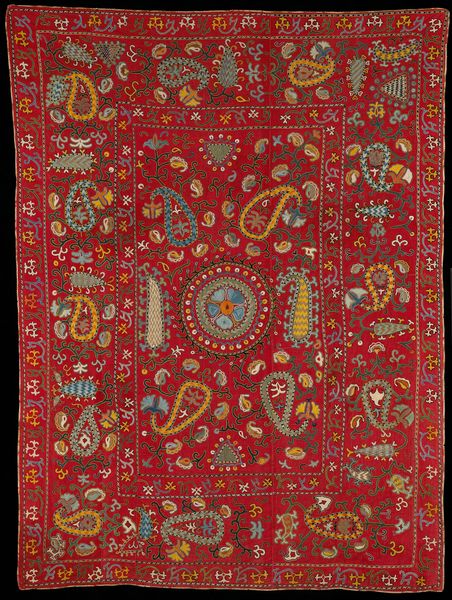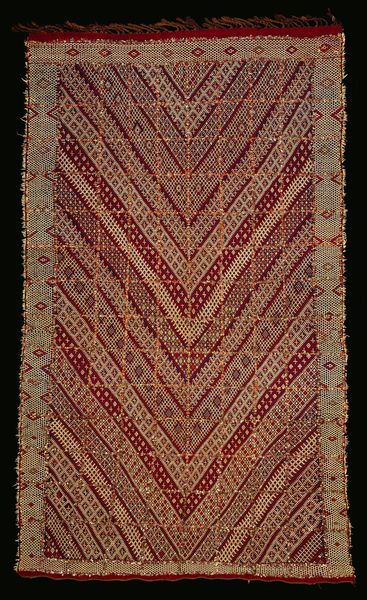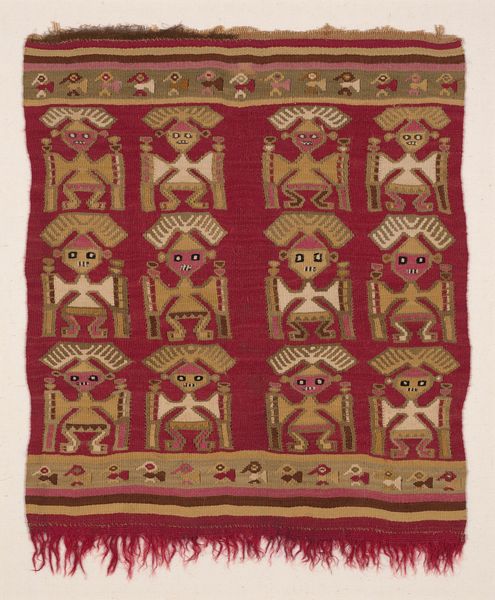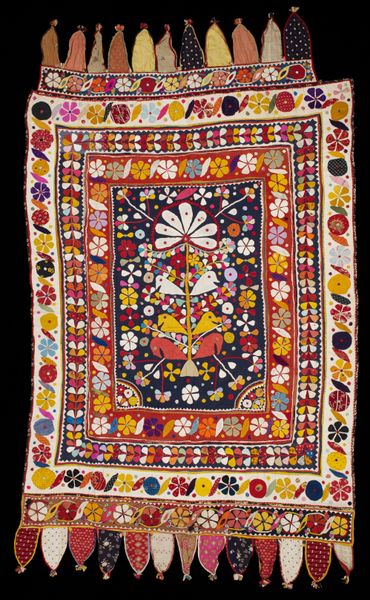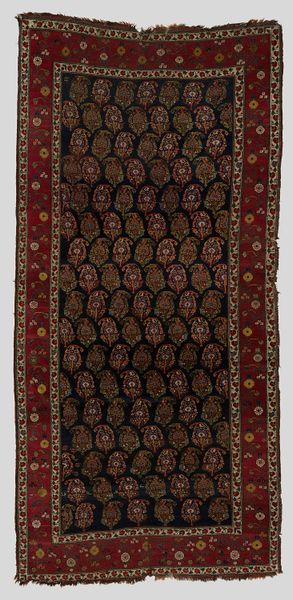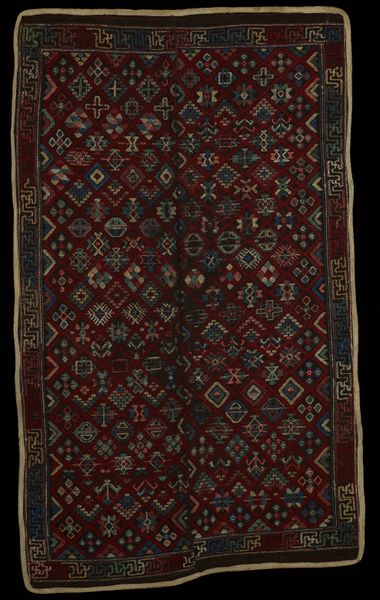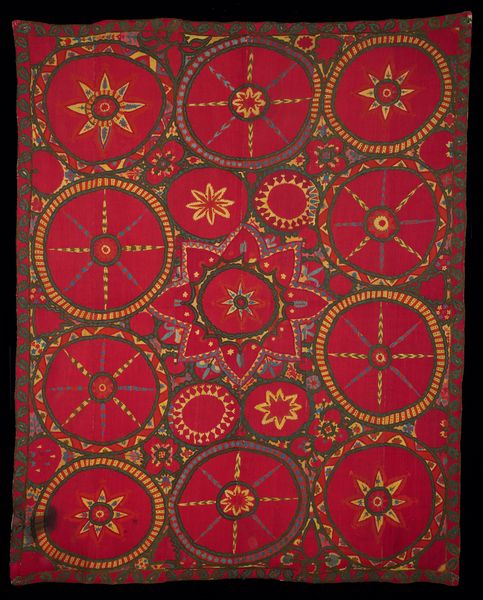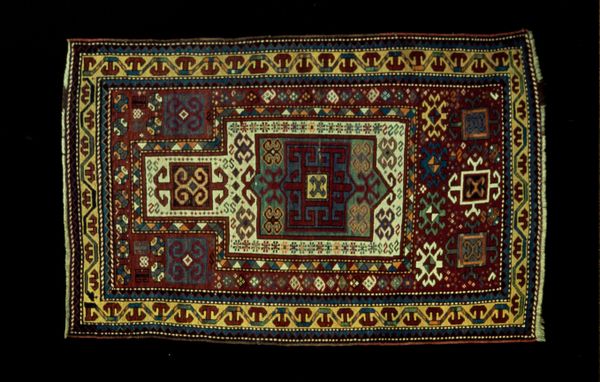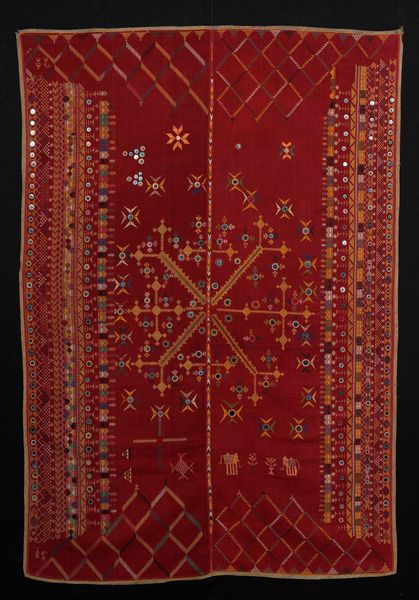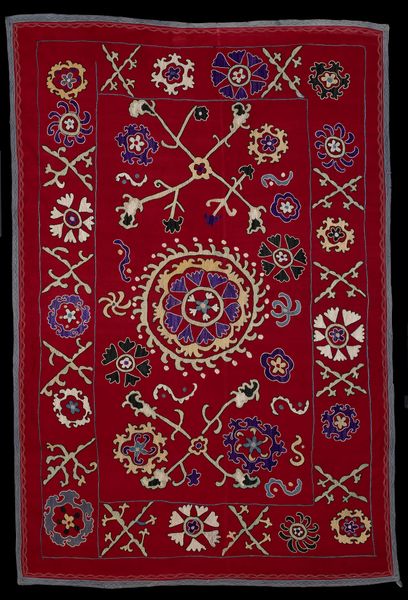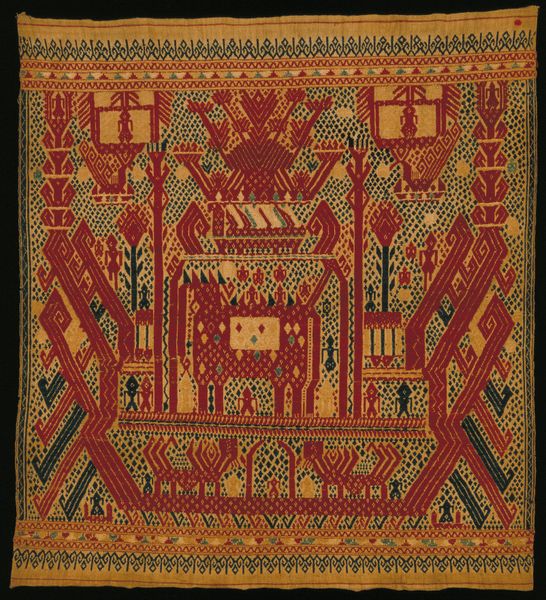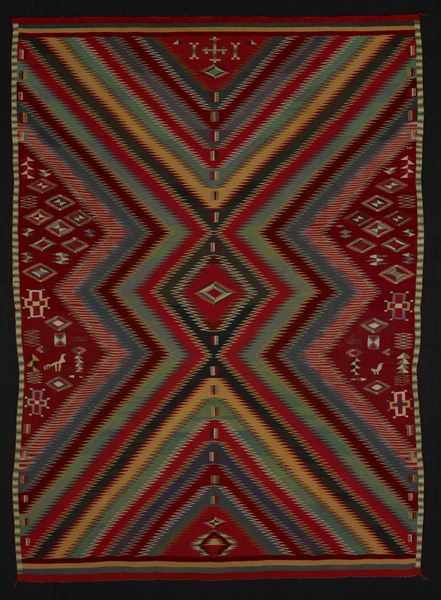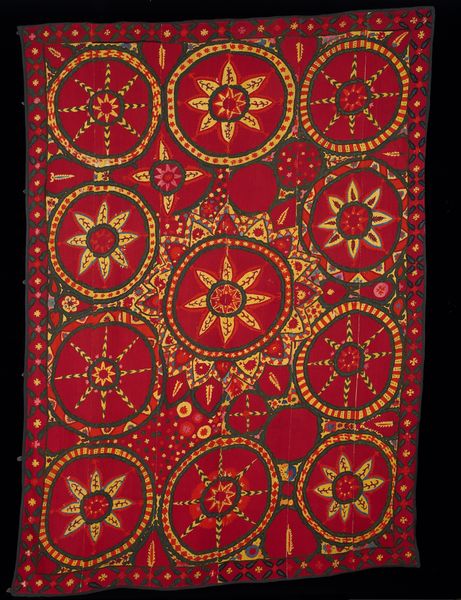
weaving, textile, cotton
#
weaving
#
textile
#
geometric pattern
#
geometric
#
cotton
Dimensions: 71-1/2 x 55 in. (181.6 x 139.7 cm)
Copyright: Public Domain
Curator: Oh, that’s cozy! Makes me think of grandma’s attic and maybe some pagan ritual. It’s like a really bold secret code, almost a wink. Editor: Indeed. Before us is a striking textile. Dating back to the 18th century, this piece—called "Double Rya"—originates from an anonymous creator. Note how this vibrant example of weaving employs cotton to generate dynamic geometric patterns. It resides here at the Minneapolis Institute of Art. Curator: Right, the "geometric pattern," yeah, that's what I call it when my dog rolls on a rug. Seriously, though, that bright red frame is singing to me! I love how that inner black rectangle almost feels like a shadow. Gives it depth, makes you wanna know what’s lurking in the dark. Editor: The spatial arrangement here is quite remarkable, with its deliberate mirroring, or repetition. You will notice an interior section delineated with a triangular patterned band and those charming dispersed motifs inside the borders, all bound within these rectilinear parameters, almost dialoguing. Do you concur? Curator: “Charming” is one word, I’d also say potent! And yeah, there is a strange echo in it. It is kind of… well, haunted and comforting all at once. Editor: Perhaps, though for me the construction is of key importance. Take a close look at the edges—notice that the colors are purposefully contained within their respective shapes? No hues bleed out, but adhere to their given field of tone, reinforcing a structure that’s both stable and rather playful at the same time. Curator: Huh. "Stable." I think this thing wants to fly you on a wild adventure. The raw edges of the work add to the mysticism! Maybe its incomplete state adds to its feeling that is still telling its own story? Editor: Maybe indeed. Though I stand fast that its meticulous execution contributes more to its narrative strength that that incomplete part. Anyway, I've appreciated the discourse, especially when considering such divergent interpretive starting-points. Curator: Absolutely. It’s these textiles that spark an old conversation that keep those histories, their textures, and those voices living with us, breathing life to any space.
Comments
minneapolisinstituteofart almost 2 years ago
⋮
Rya bedcovers were extremely popular in many parts of Sweden from the late 16th century through the 19th century. Placing the woolen pile of a rya next to the body provides an extra layer of insulation that traps the sleeper's body heat, thus increasing its warming capabilities. The earliest ryas featured a relatively plain pile surface and moderately decorative ground fabric. By the end of the seventeenth century, however, the practical use of ryas began to diminish and their decorative possibilities took on increased importance. Elaborately patterned ryas became important as wall hangings and rugs and indicated the wealth and prestige of the owners. Double ryas are relatively rare and combine the insulating warmth of the practical rya with the ornate qualities of the decorative rya. The warming side of this bedcover contains many of the defining features of the Oland style, such as the checkerboard pattern of the head end, the plain central area, and the striped border along three sides (see photograph). Its decorative side contains initials at the head end which indicate that it was made for a specific person, possibly as part of a wedding trousseau, rather than for general sale.
Join the conversation
Join millions of artists and users on Artera today and experience the ultimate creative platform.
